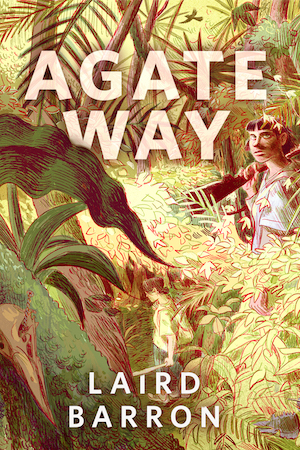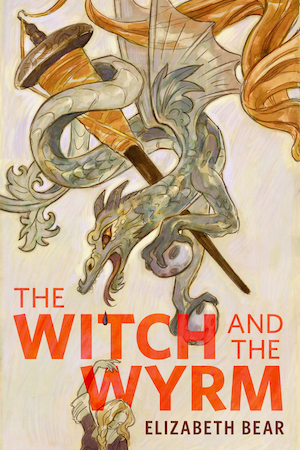Run Lola Run (German: Lola rennt) (1998) Directed by Tom Tykwer. Written by Tom Tykwer. Starring Franka Potente and Moritz Bleibtreu.
My film research takes me to a wide variety of interesting places, from interviews and set reports to historical newspaper archives and obscure YouTube channels. This isn’t the first time that research has brought up a whole lot of scholarly articles about a film. But, man, I sure did keep coming across a ton of JSTOR links this time around.
Academics love this movie. Philosophers love this movie. Film scholars love this movie. Audiences and critics love this movie. It was released in Germany in 1998, went international in 1999, and became a festival and arthouse hit.
I love this movie. I love it extravagantly. I loved it when it came out, but I hadn’t rewatched it in over twenty years. I wasn’t sure how well it would hold up, but I needn’t have worried. From the very beginning, when that ticking clock starts on the score, I was just as enthralled as I had been the first time.
There were many elements that contributed to the unusual event of an experimental German indie film enjoying widespread success. One factor is that the late ’90s were the ideal time for a movie like this to be released. This is the era that gave us 12 Monkeys (1995), Gattaca (1997), Dark City (1998), The Truman Show (1998), Sliding Doors (1998), The Matrix (1999), Donnie Darko (2001), and so many more, a cornucopia of movies that play with ideas of choice, free will, and fate, and dig into those gray areas where our relationship with our world and our sense of purpose are a bit skewed. Maybe it’s because Generation X was going through some shit at the time, maybe there are other reasons for it, but whatever the case, it was a grand time for dark, offbeat, and thoughtful sci fi and sci fi-adjacent cinema.
From its opening moments, Run Lola Run is unabashedly artsy. The pendulum, the ticking clock, the voiceover, the blurred faces in the milling crowd that sharpen and focus on characters we’ll meet, all leading to the words of the man we’ll come to recognize as the bank security guard (Armin Rohde), who says, “The ball is round. The game lasts 90 minutes. That’s a fact. Everything else is pure theory. Here we go!”
Then the action begins.
Lola (Franka Potente) gets a telephone call from her boyfriend, Manni (Moritz Bleibtreu). Manni is in trouble: while acting as a delivery boy for some gangsters, he made the extremely stupid mistake of leaving a bag of money on the train. Now he needs 100,000 marks in twenty minutes, otherwise his criminal boss will probably kill him. Manni’s only plan to solve this problem is to rob a grocery store (Manni is not the sharpest tool in the shed), but Lola tells him to wait until she gets there. She says she’ll figure something out.
That’s when Lola starts running. She doesn’t have transportation, so she runs through the streets of Berlin. Her plan, which is honestly not that much better than Manni’s, is to ask her wealthy father (Herbert Knaup) for the money.
This isn’t a crime film, even though the main characters are bumbling criminals. Nor is it an action film, for all that it contains scenes of nonstop movement and momentum. That unrelenting movement and momentum are the core of the story; the premise it all hangs on is more or less irrelevant. Watching the movie now, so many years after I first saw it, I kept thinking about how the structure of the three different versions of those twenty minutes reminds me of a very, very different movie: George Miller’s Mad Max: Fury Road (2015), another film where the viewing experience is defined by a breathless sense of forward motion—combined, of course, with a freaking awesome soundtrack. I’ll get to the music in a moment.
When Lola is thinking about who to go to for help, we cycle through the images of people in her mind before settling on her father—who shakes his head no, letting us know ahead of time what his answer will be. When she runs out of the apartment, we get a glimpse of her mother (Ute Lubosch), and on her mother’s television is an animated view of Lola in that very moment, running down the stairs, encountering a neighbor and his dog, on her way outside.
The film is constantly blurring the lines between real and surreal, between telling the story and commenting on it, between past and present and future.
Some of the film’s most interesting asides are the flash-forward snapshots we get of strangers Lola encounters on the streets of Berlin. When Lola bumps into a woman pushing a stroller, we hear the sounds of a camera’s flash charging, then we see a series of photographs that provide glimpses into the woman’s future as her life spirals darkly into addiction and crime. It happens again when Lola briefly interacts with a bicycle thief and with a woman at the bank; each time we get a look at their futures as a combination of chance events and deliberate choices that send their lives in different directions.
When Lola reaches her father’s bank, she interrupts him as he’s having an awkwardly fraught conversation with his mistress (Nina Petri). He is not inclined to give Lola 100,000 marks—and even drives her away by telling her she’s not really his daughter—so Lola leaves and races to meet Manni. She shows up after he’s already started robbing the grocery store. After they collect the money from the registers, they run outside to find the police waiting for them. A nervous cop accidentally fires his gun and shoots Lola in the chest.
The idea that very small events can have major consequences has been around in science and philosophy for a very long time. In its modern incarnation as part of chaos theory, we talk about it as the “butterfly effect,” wherein a small change in initial conditions can result in a very large changes in the future. The popular formulation of this concept comes from meteorologist and mathematician Edward N. Lorenz, who in 1972 presented the paper “Predictability: Does the Flap of a Butterfly’s Wings in Brazil Set Off a Tornado in Texas?”
Amusingly, Lorenz had actually used a seagull in earlier descriptions of the idea; Lorenz said he was encouraged to use a more poetic creature. I haven’t dug around enough to verify this order of events, but most people assume the idea to use a butterfly was a reference to Ray Bradbury’s 1952 short story “A Sound of Thunder.” In that story, a time traveling hunter accidentally steps on a butterfly in the Late Cretaceous, then returns to the present to find out that his carelessness has altered the timeline such that a fascist has been elected president.
…
…
…You know what, I’m just going to leave that there and move on.
Run Lola Run is playing around with the possibilities of the butterfly effect, but it’s not trying to present a fully deterministic universe, in either the classical philosophical sense or the mathematical sense. It’s doing something a bit weirder and more flexible than that, because it’s fiction, and it can do whatever it wants. It doesn’t have to follow the rules of chaos theory as we understand them. It can make up its own.
When Lola is shot, she doesn’t want to die—so she doesn’t. She resets, video game style, and goes back to right after she receives Manni’s phone call, and she starts running all over again. But unlike in a video game—and unlike the vast majority of time loop stories and films—she does not retain awareness of what happened before. At least not directly. Probably. It’s a lot squishier than that.
She injures herself trying to avoid the dog and falling down the stairs. She meets the same three strangers, and we see different photographic flash-forwards of their lives. After her confrontation with her father, she robs his bank and finds Manni before he robs the grocery store, but he is struck by an ambulance on the road.
This time it’s Manni who doesn’t want to die, so we go back to the start one more time, and Lola begins her third and final run through the city.
The loops are divided by quiet scenes of Lola and Manni in bed, having the annoying sort of heartfelt conversations that young people in love tend to have very late at night. These scenes seem to exist in a liminal space, unmoored in time, providing a pause for breath in a film that has very few.
There is no mechanism for any of this within the story. It’s not quite science fictional. It’s not quite supernatural. It’s both, and it’s neither. It doesn’t matter. The story happens; it does not explain itself.
If it weren’t for a few key details, the movie could even be showing us different possibilities—but those details are in the film for a reason. The characters do carry some awareness from one round to the next. At times reality does bends just a little bit. First Lola refuses to die, then Manni. Lola remembers how to disengage the safety on a handgun. The bank security guard is expecting her arrival. The blind woman outside the phone booth nudges Manni at just the right moment. And there is, of course, Lola’s glass-shattering, roulette-winning scream, which suggests some element of control over the narrative, but does not ever try to explain it. (The film leaves that up to the audience and the people who have been interpreting and analyzing and studying and contemplating the film since its release.)
This isn’t what we expect from more typical time loop stories, where a fully aware protagonist is responsible for making choices that alter the sequence of events, or for embracing or trying to escape the play-and-reset video game nature of the experience. The film is mostly focused on Lola—although the point of view does wander a bit—but it is not focused on whether or not she learns anything as an individual. Its perspective is more communal than that. Lola is at the center of the film, a force of pure momentum with her desperation to save the man she loves and her preternatural ability to sprint in those boots, but she is the center in the same way a pinball is the center of an arcade game, where the pinball machine is Berlin in the late ’90s.
The movie was filmed exactly where it takes place: in and around the streets of Berlin. The places become familiar to us as we see them two or three times, as do the people Lola passes or encounters. The streets and buildings, the cars and the graffiti, the gangsters and the petty criminals, the bicycle thief and the homeless man, the bank customers and the grocery shoppers, the nuns and that very stressed ambulance driver, they are all a part of the cityscape this film is weaving. Lola always stands out against the muted colors of the city because of that bright red hair—truly a brilliant character design choice—but she is never separate from her world.
The film is always bracingly aware of the fact that its characters are moving through time and space, sometimes bouncing off each other and sometimes missing each other, but never isolated from the effects. Nobody is alone in this narrative, and nobody’s actions exist in a vacuum.
There’s one other element of the story that is vital to its momentum and sense of place, and that’s the completely fucking awesome soundtrack. The music was written by Tykwer, Johnny Klimek, and Reinhold Heil, with Tykwer, Klimek, and Franka Potente providing most of the vocals. It’s fast-paced, bass-heavy techno that starts as soon as the film begins and never lets up.
The only time the original score swerves into more typical movie soundtrack territory is with a surprising and delightfully unexpected use of Dinah Washington’s “What a Diff’rence a Day Makes.” The music also borrows from Charles Ives’ “The Unanswered Question,” a short experimental piece that, fittingly, music scholars and philosophers have loved analyzing since it was first performed in the 1940s.
But for the most part, the entire film is accompanied by that amazing, unrelenting techno score. It’s techno not just because it comes from Germany in the ’90s, but because one of the most familiar traits of techno is its layered, rhythmic, looping structure, where musical patterns and themes are repeated, altered, and piled atop each other with no real sense of beginning or end. The ways the music echoes the structure the film are obvious: the rhythm of Lola’s footsteps as she runs, the way each loop serves as a variation on the same theme, the way the music pauses when the story’s forward momentum pauses. The lyrics to the track “Wish (Komm zu mir),” which were written by Tykwer and musician Thomas D., present a litany of love and yearning and desperation. It’s not a direct representation of what must be going through Lola’s and Manni’s minds, but it is an accompaniment that comes very close.
Like all the very best film scores, the music of Run Lola Run is a necessary and indelible part of the movie. It’s not meant to fade into the background, no more than Lola’s bright red hair is meant to blend in. Lola and the music are running through Berlin together, pinballing into ordinary people on ordinary city streets, hyper focused on the twenty-minute loops but still instigating events that will reach far beyond that time limit. Every encounter has a mutual impact; we see the way those chance events affect Lola along with the flash-forward snapshots of the strangers’ futures.
The film leaves no space for pat lessons or tiresome moral judgements or viewers who might want to congratulate themselves that they would never end up living so recklessly or dishonestly or miserably. Instead, it opts for a worldview in which everybody’s life is made up of both choice and chance, both purpose and happenstance, because everything we do is connected by invisible threads to the people and the world around us.
It all goes back to the security guard’s words at the beginning: “The ball is round. The game lasts 90 minutes. That’s a fact. Everything else is pure theory. Here we go!”
We are here for the time we have, and we fill it with the actions we choose. Everything else is pure theory. Here we go.
What do you think of Run Lola Run? How does it hold up for you among all the great speculative films of the late ’90s?
Elegy for a Magnificent Weirdo
It’s time for David Lynch Month.
I had planned to do this anyway at some point, but I hadn’t thought it would be a tribute. David Lynch and his works have been on everybody’s minds since his passing, so this February we’re going to watch four of his dark, weird, endlessly inventive films and spend some time digging into that unsettling borderland where surrealism and horror meet speculative fiction.
February 5 — Eraserhead (1977)
We’ll go back to where it all began with the movie that launched Lynch’s career.
Watch: Max, Criterion, Amazon, Apple, Fandango.
View the trailer.
February 12 — Dune (1984)
This might be the worst-reviewed movie we’ve watched yet in this film club. I haven’t watched it since I was far too young to appreciate anything more than the giant worms.
Watch: Max, Amazon, Apple, Fandango, Spectrum.
View the trailer.
February 19 — Twin Peaks: Fire Walk With Me (1992)
Even before you click on the trailer link below you can hear those first few notes of the theme.
Watch: Max, Criterion, Amazon, Apple, Fandango.
View the trailer.
February 26 — Mulholland Drive (2001)
The beloved movie that challenges every film writer’s ability to talk about complicated things coherently. I’ll do my best.
Watch: Criterion, Amazon, Apple, Fandango.
View the trailer.










